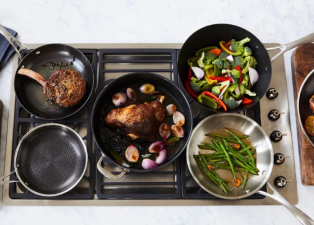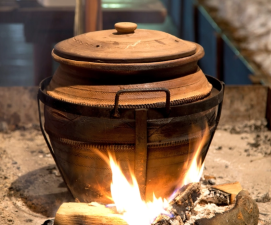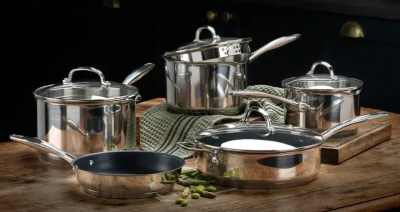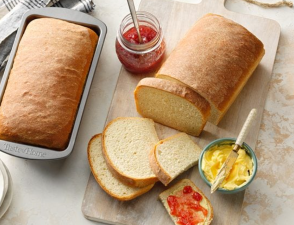How Cookware Shapes Cooking Styles Around the World
It's well known that different cuisines, in addition to unique recipes, also require specific utensils and tools. For example, in China, a bamboo steamer is essential for making dumplings, while in Denmark, a special pot is used for baking doughnuts. These utensils not only contribute to the unique flavors of different cuisines but also provide a quick way to understand national culinary specialties.
Let's start with the more easily understood concept of space. Space can be divided into natural and social environments.

- Natural Environment.
First, different natural environments lead to different food sources. As the saying goes, "Live by the mountain, eat by the mountain; live by the sea, eat by the sea." Therefore, grasslands are home to more cattle and mutton, while coastal areas are home to more fish and shrimp. Different cooking methods also vary. Second, different natural environments lead to different cooking methods, including fuel, utensils, and seasonings. If you live in an area with abundant forests, you chop trees for firewood; if you live in an area with fewer trees, you use dried cow dung; if you live in an area with coal, you use coal for cooking. Therefore, you'll rarely see lamb kebabs grilled with cow dung, nor duck smoked with coal. This is due to differences in cooking methods caused by the fuel used. Other factors, such as utensils and seasonings, are also easy to understand. Before chili peppers were introduced to my country, our ancestors used spices like cornelian berries as spice enhancers, so cooking methods naturally differed greatly from today's. African natives cook in clay pots, while you use iron pans. Different utensils naturally lead to different cooking methods.
- Social environment.
First, differences in religion and culture within the social environment lead to different cooking methods. For example, Islamic halal food has its own unique cooking style; Chinese and Western cultures differ, each with its own culinary strengths, and so on. Second, differences in social class, status, and cultural attainments also lead to different cooking methods. For example, hungry and cold boatmen invented malatang (hot spicy hot pot); Su Dongpo, also starving and cold, invented Dongpo pork (Dongpo pork); the lower classes, who rarely saw oil a few times a year, invented and promoted the cooking of animal offal; the imperial family, never tired of fine food, developed the all-encompassing Manchu-Han banquet; monks abstain from meat, practicing qigong morning and night to expend energy and spirit, and using vegetarian chicken to alleviate hunger (this is how "meat dishes" made from soy products like vegetarian chicken came about), and so on. Furthermore, the openness of the social environment and the frequency of interaction with the outside world can also lead to differences in cooking techniques. An open-minded society fosters the exchange and learning of different cooking techniques, which in turn give rise to new ones.

Different Ingredient Structures
Asian people rely on rice and noodles as their staple food, while Europeans rely on bread. Generally speaking, Chinese people tend to favor herbivores, while Europeans tend to favor carnivores. Most ancient Chinese people lived a life of farming and weaving, with fish and meat being a scarce source, mostly given as tribute to the royal family and nobles. If they were settling down, they'd naturally buy more and more pots, pans, and utensils. Westerners, on the other hand, are primarily nomadic peoples, primarily engaged in herding and hunting. Their diets are primarily animal-based, primarily composed of protein and fat. Animals primarily eat grass from pastures, while cereals and millets make up a very small portion of their diet. For nomadic people, cooking methods like frying, roasting, and stewing are more convenient, requiring fewer tools.


